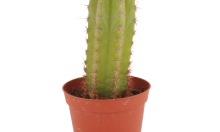San Pedro Cactus back in stock!
Posted under: News and Science

Yes! We had lots of questions regarding the stock status of our best selling cactust San Pedro. Of course we always do our best to satisfy you with the best quality products, but sometimes it's out of our hands.
Because of the strange wetter in Holland we have had a delay in our magic supply chain.
About the San Pedro Cactus
Peyote and San Pedro are New World psychedelics. In ancient times their use was concentrated in the regions to which they are native. Peyote was used throughout Mexico to as far north as Texas, San Pedro in the Andes mountain region of South America. The earliest known depiction of San Pedro cactus is on a stone tablet found in Peru dating to 1300 B.C. Ritual objects containing images of Peyote have been found dating back to 500 B.C. The introduction of Peyote into the U.S. and Canada, and its use by North American Indian tribes, occurred much more recently, beginning sometime in the late 1800s.
Supernatural power
"San Pedro has a special symbolism in curanderismo [folk healing] for a reason: San Pedro is always in tune with the powers of animals, of strong personages or beings, of serious beings, of beings that have supernatural power.
The San Pedro cactus, Trichocereus pachanoi, represents undoubtedly one of the most ancient of the magic plants of South America. The oldest archaeological evidence, a Chavin stone carving in a temple in northern Peru, goes back to 1300 B.C. Almost equally old textiles from Chavin depict the cactus with jaguar and hummingbird figures.
Peruvian ceramics made between 1000 and 700 B.C. show the plant in association with the deer; and others, several hundredyears later, have the cactus with the jaguar and stylized spirals illustrating the hallucinogenic experiences induced by the plant. On the southern coast of Peru, large ceramic urns of the Nazca culture, dated 100 B. C.—A.D. 500, depict San Pedro.
Find more information how to order this product!




March 7, 2013